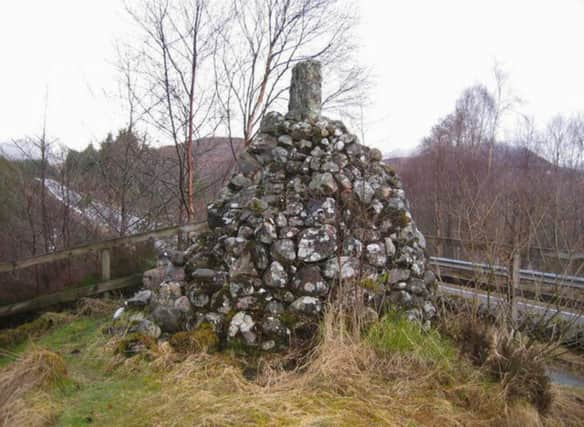The overlooked roadside cairn dedicated to Bonnie Prince Charlie’s heroic lookalike, 1745’s forgotten hero


The sacrifice of Roderick MacKenzie is one of the most crucial stories to the Jacobite Rising of 1745 yet most know nothing about it… Unless curiosity gets the better of them and they investigate his subdued cairn on the road leading away from Loch Ness at Invermoriston.
In the aftermath of their defeat at the Battle of Culloden in 1746, surviving Jacobites were on the run from government soldiers. Eventually, one group in Glenmoriston found themselves cornered, among them was the leader of the rebellion himself Bonnie Prince Charlie and MacKenzie who had an interesting relationship with the prince.
Advertisement
Hide AdAdvertisement
Hide AdMacKenzie, the son of a tradesman from Edinburgh, looked so much like Charles that on top of being his bodyguard and personal friend he also served as a body double. From their vantage point on top of the glen, the Prince and his small group of allies spotted the redcoat army who was hot on their tail but as they were confined to a cave there was no apparent escape for them.
Thinking on his feet, MacKenzie’s selfless sense of patriotism led him to make a decision that would spell his end. As the soldiers closed in, the young Jacobite took the Prince’s clothes and bravely stormed down the hillside so he would be spotted by the enemy. When he was caught, he committed to playing the role of the prince and refused to be taken alive.
As Charles was wanted dead or alive anyway, the soldiers shot him down and it is said that MacKenzie’s last words were: “You have murdered your prince!” Delighted with their bounty but reluctant to haul his remains to Fort Augustus where they would claim a reward, the soldiers took only MacKenzie’s head.
The Duke of Cumberland or “Butcher Cumberland”, the leader of the government army, was so convinced that it was the head of the prince that he called off the manhunt and passed it down to London. By the time that officials in England caught wind of the ruse, the sacrifice of MacKenzie had bought the Prince enough time to escape to the Hebrides which ultimately saved his life.
The unsung hero would be all but forgotten about if not for the cairn built in his honour that can be found on the A887.
The memorial reads: “Here, in consecrated ground , rest the mortal remains of Roderick MacKenzie, merchant of Fisherrow , and son of an Edinburgh jeweller, slain by Cumberland’s Redcoat troops late in July 1746 , three months after the Battle of Culloden, because he selflessly encouraged them to mistake him for Prince Charles Edward Stuart who had closely resembled in age, stature and colouring, and who he served faithfully to the end.”
It continues: “Local clansfolk are credited with removing his body a short distance from where he fell (now marked by the cairn across the road) and secretly burying it without a headstone, here, by Caochan a' Cheannaich (Stream of the Merchant).
“Every year, in July, there is a small gathering here attended by members of the 1745 Association and the Clan Mackenzie Society in order to honour 'the saddest and noblest of the Mackenzies'.”
Comments
Want to join the conversation? Please or to comment on this article.
